Power Query: Revision Time – Part 10
12 June 2024
Welcome to our Power Query blog. Today, I continue to create a refreshable revision timetable by randomising the subject slots I need for the timetable.
As my salespeople take a well-earned break, many students here in the UK are preparing for exams in the summer. To help my own offspring get organised, I volunteered to create a refreshable printable revision timetable. This is the result:

I needed a list of topics, and to begin with, I created extra entries for topics that required more timeslots:

We agreed on half-hourly slots, and I created a grid so that my daughter could indicate the slots that she wouldn’t be able to revise.
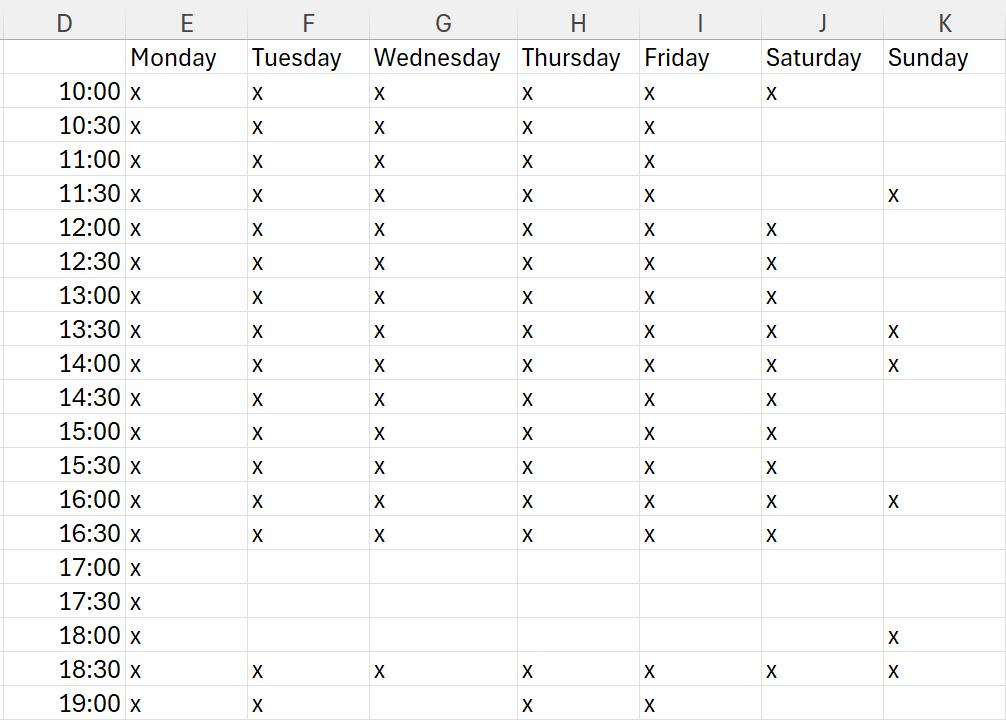
When I first designed the solution, I included some Excel functions, but since this is a Power Query blog, I will ensure that I only use Power Query functions (apart from some formatting at the end!).
In Part 1, I converted my data into two [2] Tables: Subjects and Availability. I extracted Subjects to Power Query.

I created the Availability query by taking a copy of Subjects, and amending it:
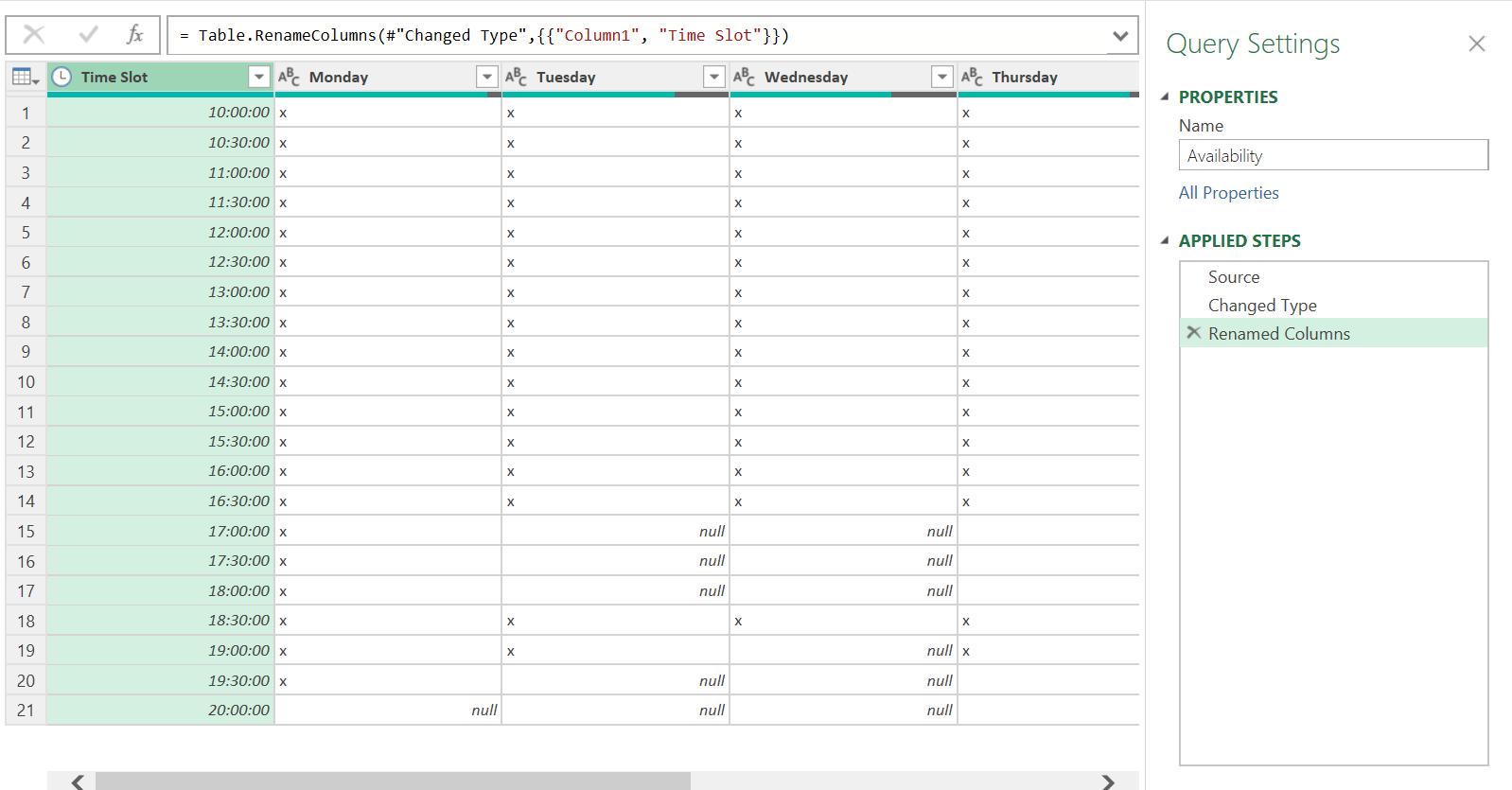
In Part 2, and Part 3, I calculated the number of subjects and the number of slots on Availability.
This gave me both totals:
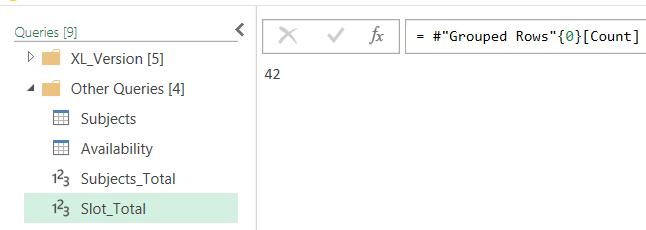
In Part 4, I calculated how many times each subject will appear in a new query, remembering to round up to whole slots.
This told me the number of slots that each subject should have for my example is three [3]:

In Part 5, I created a table where each subject appeared three times (i.e. the number of times given by Subject_Slots).
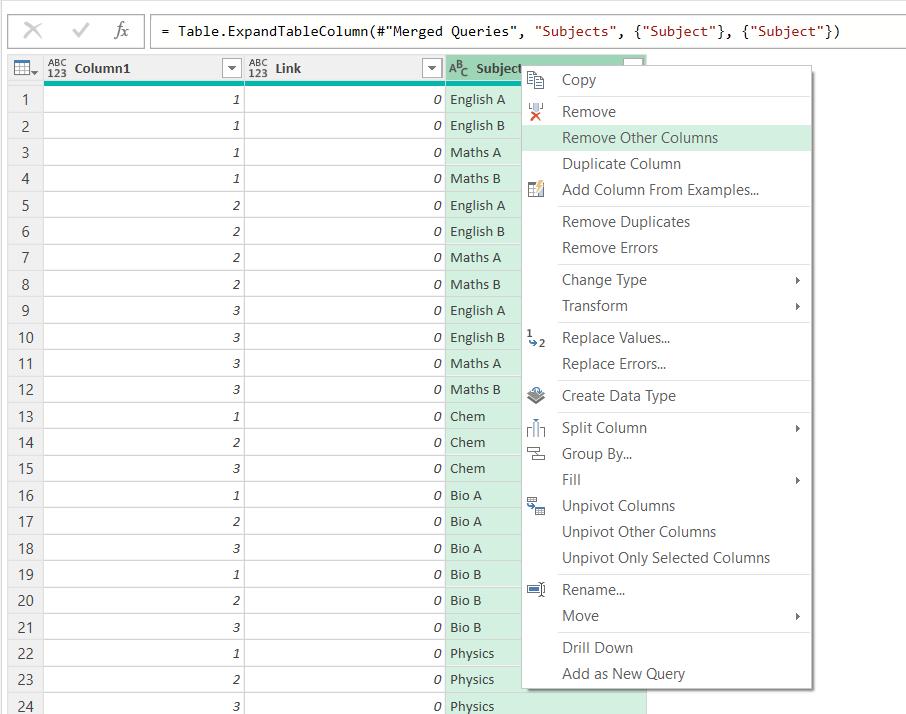
In Part 6, I randomised the order of the slots ready to add to the timetable:

In Part 7, I took a reference copy of the query Availability which I called TimeTable and began to transform it so that it is ready to receive the slot data.

In Part 8, I appended the slot number data to the rest of the TimeTable query.

Last week, I removed the duplicate values.

However, as I said in Part 8, I could have transformed the data in TimeTable by merging instead of appending. To make it easier to follow, I have created a copy of the earlier steps of TimeTable. This query has been created purely to show the merging technique:

I choose ‘Merge Queries’ from the Home tab, and merge TimeTable (Merge Method) with itself. I choose to merge on all columns apart from Slot Number and take the default ‘Left Outer’ join.
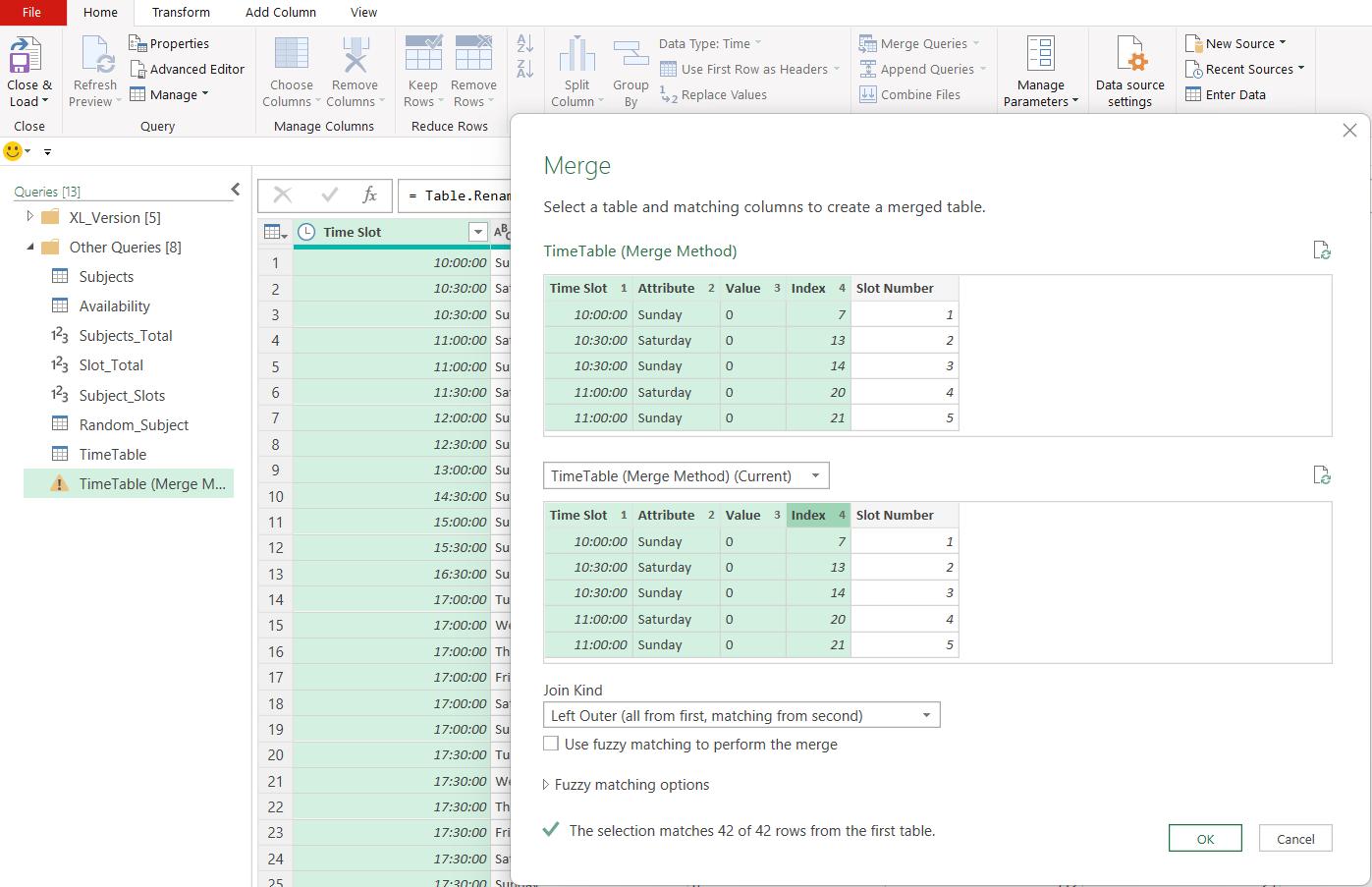
The results are not relevant at this point: I need to change the M code.

I change the M code from:
= Table.NestedJoin(#"Index Slots Only", {"Time Slot", "Attribute", "Value", "Index"}, #"Index Slots Only", {"Time Slot", "Attribute", "Value", "Index"}, "Index Slots Only", JoinKind.LeftOuter)
to
= Table.NestedJoin(#"Index Full Query", {"Time Slot", "Attribute", "Value", "Index"}, #"Index Slots Only", {"Time Slot", "Attribute", "Value", "Index"}, " Index Slots Only", JoinKind.LeftOuter)
i.e. I am changing the first merge table to the ‘Index Full Query’ step:

I only need the Slot Number from the expanded Table:
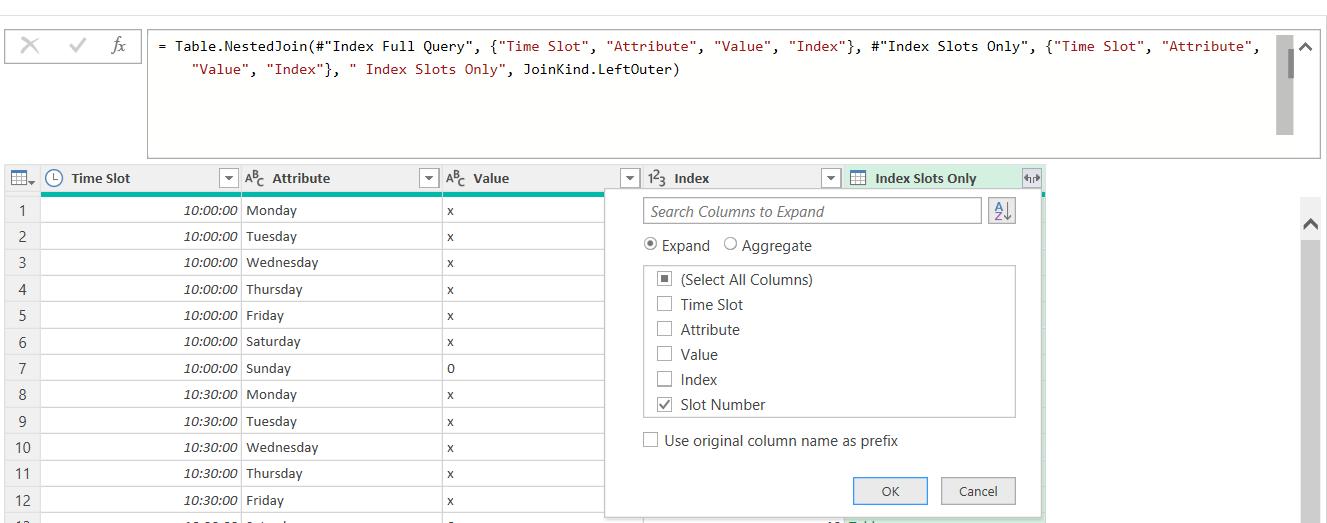
When I click OK, I have the data, but the order is jumbled:

When I sort the data by ascending Index, I can compare it with the append method:

I have the same results in the same number of steps, so it only comes down to which method is easier for you!
Next time, I will continue to transform TimeTable.
Come back next time for more ways to use Power Query!

